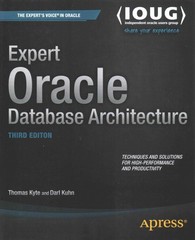Question
Iterative Control: WHILE and FOR Loops 1. Write a PL/SQL block to display the country_id and country_name values from the WF_COUNTRIES table for country_id whose
Iterative Control: WHILE and FOR Loops
1. Write a PL/SQL block to display the country_id and country_name values from the
WF_COUNTRIES table for country_id whose values range from 51 through 55. Use a
WHILE loop. Increment a variable from 51 through 55. Test your variable to see when it
reaches 55. EXIT the loop after you have displayed the 5 countries.
2. Write a PL/SQL block to display the country_id and country_name values from the
WF_COUNTRIES table for country_id whose values range from 51 through 55 in the
reverse order. Use a FOR loop.
3. new_emps table
A. Execute the following statements to build a new_emps table.
DROP TABLE new_emps;
CREATE TABLE new_emps AS SELECT * FROM emp;
ALTER TABLE new_emps ADD stars VARCHAR2(50);
B. Create a PL/SQL block that inserts an asterisk in the stars column for every whole $500
of an employees salary. For example, if an employee has salary of $4000, the string
******** would be inserted. Use the following code as a starting point.
DECLARE
v_empno new_emps.empno%TYPE := &empno;
v_asterisk new_emps.stars%TYPE := *;
v_sal_in_5hundreds new_emps.sal%TYPE;
BEGIN
SELECT NVL(TRUNC(sal/500), 0)
INTO v_sal_5hundreds
FROM new_emps
WHERE empno = v_empno;
FOR
?
END LOOP;
UPDATE new_emps
SET stars = v_asterisk
WHERE empno = v_empno;
END;
/
C. Test your code using empno 7788, 7456, and 7698.
D. Execute a SQL statement to check your results.
Iterative Control: WHILE and FOR Loops
1. Write a PL/SQL block to display the country_id and country_name values from the
WF_COUNTRIES table for country_id whose values range from 51 through 55. Use a
WHILE loop. Increment a variable from 51 through 55. Test your variable to see when it
reaches 55. EXIT the loop after you have displayed the 5 countries. (4 points)
2. Write a PL/SQL block to display the country_id and country_name values from the
WF_COUNTRIES table for country_id whose values range from 51 through 55 in the
reverse order. Use a FOR loop. (4 points)
3. new_emps table (4 points)
A. Execute the following statements to build a new_emps table.
DROP TABLE new_emps;
CREATE TABLE new_emps AS SELECT * FROM emp;
ALTER TABLE new_emps ADD stars VARCHAR2(50);
B. Create a PL/SQL block that inserts an asterisk in the stars column for every whole $500
of an employees salary. For example, if an employee has salary of $4000, the string
******** would be inserted. Use the following code as a starting point.
DECLARE
v_empno new_emps.empno%TYPE := &empno;
v_asterisk new_emps.stars%TYPE := *;
v_sal_in_5hundreds new_emps.sal%TYPE;
BEGIN
SELECT NVL(TRUNC(sal/500), 0)
INTO v_sal_5hundreds
FROM new_emps
WHERE empno = v_empno;
FOR
?
END LOOP;
UPDATE new_emps
SET stars = v_asterisk
WHERE empno = v_empno;
END;
/
C. Test your code using empno 7788, 7456, and 7698.
D. Execute a SQL statement to check your results.Iterative Control: WHILE and FOR Loops
1. Write a PL/SQL block to display the country_id and country_name values from the
WF_COUNTRIES table for country_id whose values range from 51 through 55. Use a
WHILE loop. Increment a variable from 51 through 55. Test your variable to see when it
reaches 55. EXIT the loop after you have displayed the 5 countries. (4 points)
2. Write a PL/SQL block to display the country_id and country_name values from the
WF_COUNTRIES table for country_id whose values range from 51 through 55 in the
reverse order. Use a FOR loop. (4 points)
3. new_emps table (4 points)
A. Execute the following statements to build a new_emps table.
DROP TABLE new_emps;
CREATE TABLE new_emps AS SELECT * FROM emp;
ALTER TABLE new_emps ADD stars VARCHAR2(50);
B. Create a PL/SQL block that inserts an asterisk in the stars column for every whole $500
of an employees salary. For example, if an employee has salary of $4000, the string
******** would be inserted. Use the following code as a starting point.
DECLARE
v_empno new_emps.empno%TYPE := &empno;
v_asterisk new_emps.stars%TYPE := *;
v_sal_in_5hundreds new_emps.sal%TYPE;
BEGIN
SELECT NVL(TRUNC(sal/500), 0)
INTO v_sal_5hundreds
FROM new_emps
WHERE empno = v_empno;
FOR
?
END LOOP;
UPDATE new_emps
SET stars = v_asterisk
WHERE empno = v_empno;
END;
/
C. Test your code using empno 7788, 7456, and 7698. Execute a SQL statement to check your results.
Step by Step Solution
There are 3 Steps involved in it
Step: 1

Get Instant Access to Expert-Tailored Solutions
See step-by-step solutions with expert insights and AI powered tools for academic success
Step: 2

Step: 3

Ace Your Homework with AI
Get the answers you need in no time with our AI-driven, step-by-step assistance
Get Started


